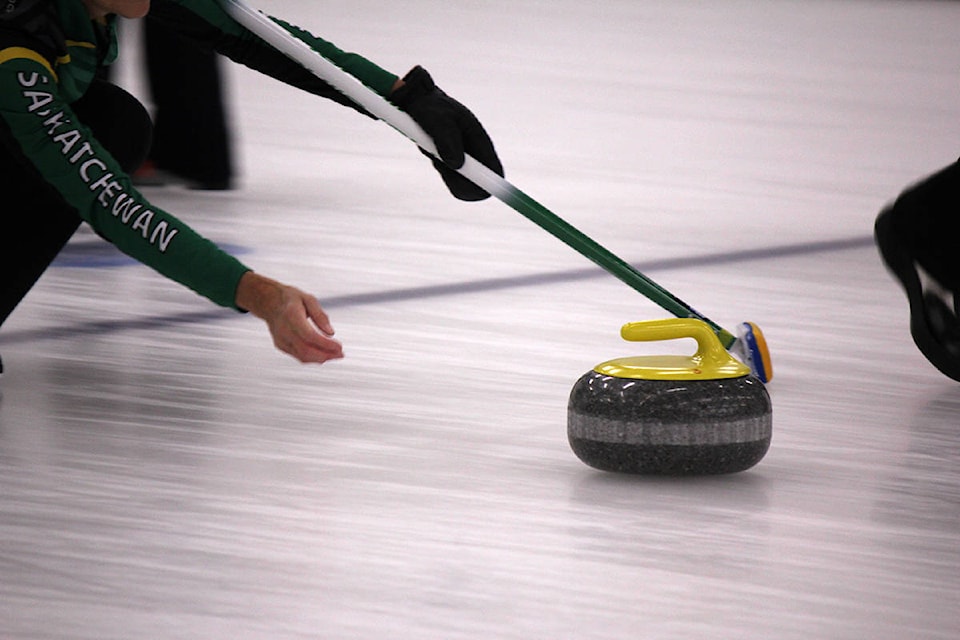After a game of curling, physicist Mark Shegelski likes to sit down with his buddies and play a little game.
“I would say, ‘Hey, hey, before you pour the beer’ — because you have to drink beer after every game of curling, right — ‘before you pour the beer, let me just show you something,’” Shegelski said. He would grab the empty beer glass, turn it upside down and place it on the table.
Pretending like he was concentrating hard, Shegelski would send the glass down the table. As it travelled, the glass would rotate clockwise and move gradually to the left.
It was the exact opposite to how a curling rock would move, and Shegelski’s fellow curlers would be dumbfounded.
“They were just like ‘How? What’s going on?’ And for them, this was baffling. Why was the drinking glass going the wrong way?” Shegelski said. “But for me, it was the other way around.”
For Shegelski, a physicist that researches quantum mechanics at the University of Northern British Columbia, the curling rock was the mystery. Unlike a drinking glass, which curls (or moves to the side) in the opposite direction that it rotates, a curling rock will curl in the same direction of its rotation.
“From a physics point of view, it’s easy to understand the drinking glass,” he said. “It’s harder to understand the curling rock.”
Easy is a relative term of course, but the basics of drinking-glass physics can be distilled into a few sentences.
As the glass moves forward, friction increases at the front of the glass. Friction is what slows the glass down and brings it to a stop. But the glass is also rotating, moving in a clockwise pattern. Because the front of the glass is moving to the right (and the right side is moving slower because of it), there will be more friction on the left as it pushes against the table.
This means that the place with the most friction on the glass will be the front-left portion — which is why the glass curls to the left.
But with a curling rock, those rules of physics don’t seem to apply. Instead of the rock being drawn in the direction of the most friction, it curls away from it.
That perplexed Shegelski as a grad student, and prompted him to dabble in some of the science behind the sport from the late 1990s to the early 2000s. But it was research that was just for fun, and he dropped it for about 10 years.
When he came back to it, he partnered with Edward Lozowski, a physicist at the University of Alberta and the “king of the physics of ice” according to Shegelski. Together, they came up with a theory that could explain the reason behind the unusual movement of curling rocks.
“I was just thinking, what’s the easiest way to make the rock go sideways,” Shegelski explained. “I thought, if when you shot the rock, suppose it’s stuck in the right-hand side, and rotated for a bit … Then suppose that stickiness broke and it slid the rest of the way straight down the ice.”
“So then I though, well what if you have a whole bunch of brief times where it rotates and changes its direction.”
The concept, which Shegelski and Lozowski dubbed the “pivot-slide model” uses the bumpiness of curling ice as a key part of the theory. As the curling rock travels and rotates, it will catch on the multitude of bumps covering the ice. Each bump that pulls it to the right will result in the rock curling towards the right.
Of course, it is hypothetically possible the rock could curl to the left using this model, but that’s not likely to happen.
“We think there are sticky events or pivoting at different points around the rock,” Shegelski explained. “But the bottom line is that pivots on the left side and pivots on the right side cancel each other out.”
Because of the rotation, the movement isn’t “the same left and right,” he continued.
“So as a result you get more pivoting on the right-hand side. That’s what dominates and governs the way it moves.”
For Shegelski, it was a eureka moment, especially now that other experiments have given credence to his and Lozowski’s theory. But there is still more to learn.
Take the distance a rock curls for example. Normally, a rock will curl about a metre as it travels up the ice; this remains true whether it rotates two times or 60 times as it travels. But get the rock to rotate 80 times? Then suddenly the curling rock will move two metres to the right.
In another experiment, Shegelski found that if he shot the rock on hockey ice, and made it rotate quickly while sliding slowly, it would curl in a spiral pattern.
“This is why I say these rocks are amazing, the things they do,” Shegelski said. “You’re just looking at this and you’re just shocked.”
Shegelski and Lozowski will continue to work on the physics of curling, but only in their spare time. They have other research projects after all, and curling rocks will continue to move in mysterious ways, no matter how thoroughly they are researched.
“That’s one of the things I love about physics,” Shegelski said. “You think you get it all figured out, and then you try something and it goes exactly opposite to what you expect.
“And then you sit down and you say ‘Why does it do what it just did?’
“And by thinking enough, most of the time you can figure out the answer and realize if you really would have thought about it really carefully … you would have realized you were going to get this surprising result.”
editor@cloverdalereporter.com
Like us on Facebook and follow us on Twitter
